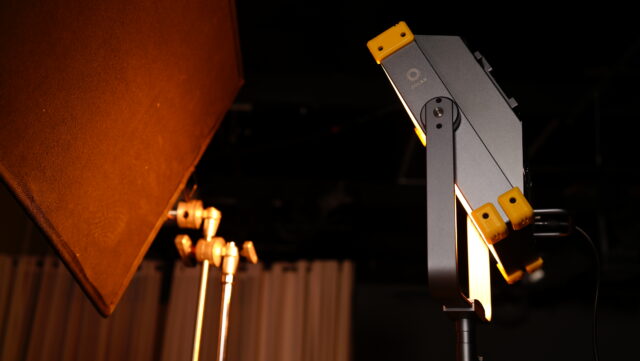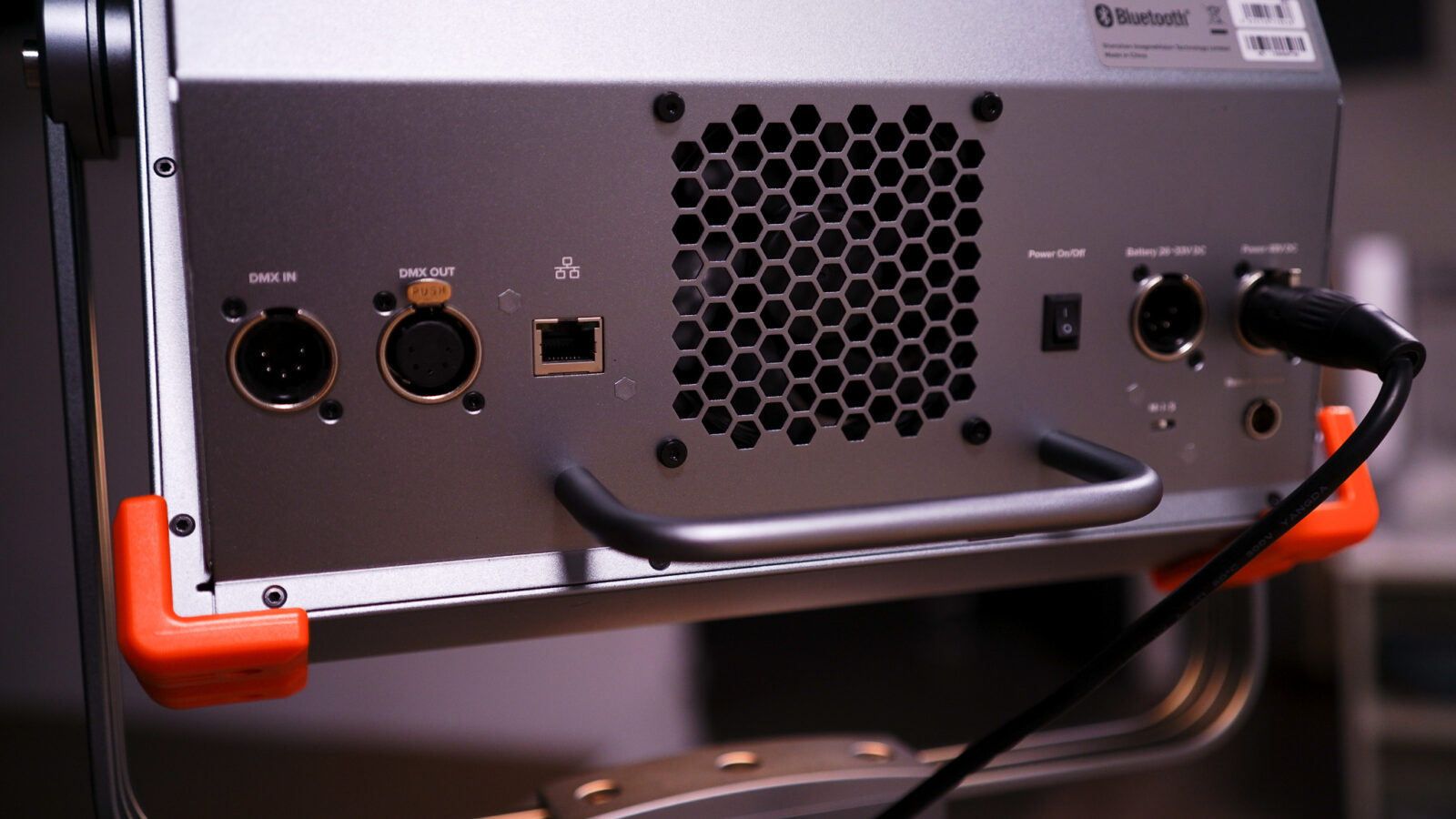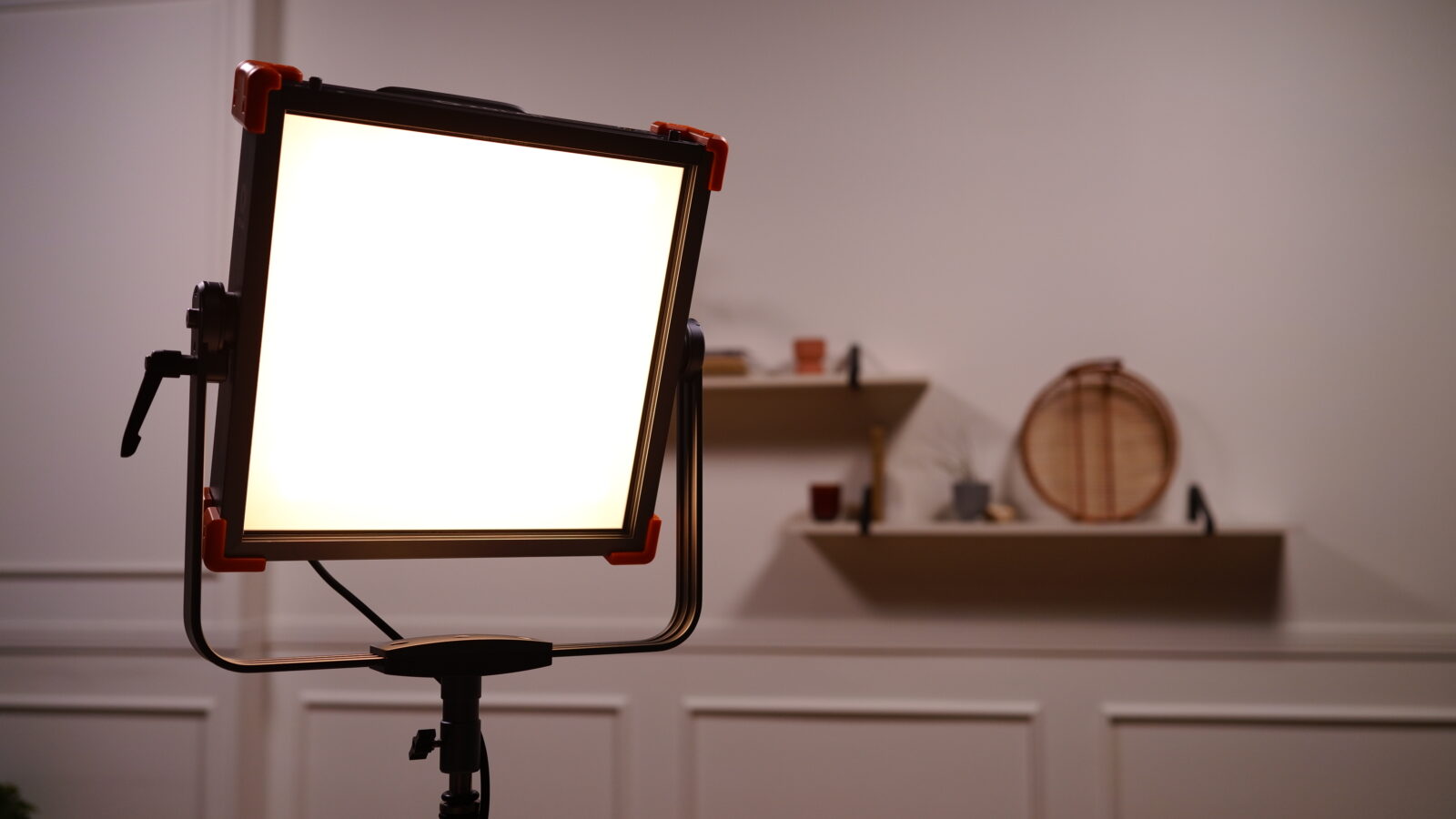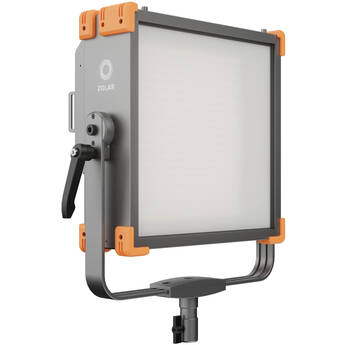
Z CAM, known for their line of cinema cameras by the same name, has introduced a line of LED fixtures with the space-age name of ZOLAR. These lights range from a budget bi-color version to an RGBAW color version and they are slightly larger than the 1×1 footprint we know and have become very familiar with in the industry. Let’s take a look at the our written ZOLAR light review.
Editor’s note: A more detailed video review (including light measurements) for the ZOLAR Lights is in the making, but will only be published in the new year.
Before I get started with this review, watch our video coverage from IBC about the ZOLAR lights, where we talked to Z CAM / ZOLAR CEO Kinson Loo.
But now on to the actual ZOLAR Light review: Let me start by saying that I had an opportunity to review the following fixtures as part of the ZOLAR lineup:
ARRI Lighting Systems Control
- ZOLAR Vega 30C RGBAW – 2000K – 20000K CCT Range, RGBAW Color, $799 Cost
- ZOLAR Toliman 30C Bi-Color – 3200K – 5600K CCT Range, $699 Cost
- ZOLAR Toliman 30S Bi-Color – 3200K – 5600K CCT Range, $499 Cost
It’s easy to focus this review primarily on the formidable looking (in terms of specs on the page) ZOLAR Vega 30C RGBAW because color is revolutionizing how we work on set, but there is much to discuss regarding the other two Bi-Color versions too. I’ll admit as more 1×1-ish fixtures hit the market over time I find myself becoming steadily more critical of LED lights with these dimensions. At the same time, we are very lucky to have so many choices these days as filmmakers, but the bar has to move steadily higher as more fixtures hit the market. At the risk of burying the lead, I’ll say that there is more to the ZOLAR line than first meets the eye, and it’s not all business as usual with their feature set.
First impressions
All of these lights have a box-like design aesthetic that feels a bit out of a classic 1950s alien invasion flick like The Day the Earth Stood Still (which I love). In particular, the Vega 30C RGBAW version and Toliman Bi-Color both have a matte silver finish broken up only by yellow (in the case of the color version) or orange (in the case of the Bi-Color versions) corner plastic protectors.
Each of these ZOLAR lighting packages weighs under 10 lbs for the lamp head, which isn’t particularly heavy and would make these good solutions for solo owners/operators. You would also be fine using a standard C-Stand or light stand. Oddly, the ZOLAR team has separated the power supply from the lamp head in their soft case included packaging and I much prefer case designs that include everything in one go.
Key features – differentiating factor to competition
A lot of the initial annoyances I’ve found lately during lighting reviews have mostly been addressed here out of the box. Let’s go ahead and list just a few banner features that stood out for me:
- Multiple Selectable Fan Modes like Auto, High, Mid, and Low (audio will thank you)
- Multi-Light Sync (sometimes called Lead/Follow by different manufacturers)
- Power Loop Output (for stringing multiple lights together in a studio environment)
- Locking Connectors Throughout (Neutrik powerCon – not in 30S)
- Dual V-Mount Battery Slots on the Power Supply
- A variety of DMX (both wired and wireless in 30C versions) and Bluetooth/Wifi connectivity options
- Four Dimming Curves and dimmable in 0.1% increments
Unfortunately, I’m a Gold Mount battery user and thus a heavy reliance on V-mount battery plates by the lighting industry has been a tough one for me, but V-Mount users will be happy with the V-Mount plate option. You could, of course, also use adapter plates as well.
DMX users will appreciate the Art-Net 4, sACN, and 5-pin wired (with RDM) options. Bluetooth users can download the ZOLAR control app HERE. The app is basic, but it does the job of tackling most of the features you’ll want Bluetooth wireless access to. It also connects quickly to each fixture.
I also found myself using an included hand remote controller for each fixture quite often when the lamp was situated high off the ground and I needed to make quick changes in a pinch.
I used the ZOLAR line on a few productions (mostly scripted commercial interiors) over the course of several weeks and in terms of just pure usage, I turned to the Vega 30C RGBAW most often for its versatility and solid color rendition. But, I want to be clear that Bi-Color still has a place on most, if not all, of my shoots. How often are you filming a project with a color aesthetic out of Bladerunnner? Most often I would guess you’ll find yourself living in a place where daylight and Tungsten are still the name of the game and so the Toliman 30C and 30S will find plenty of use for you.

One of the more impressive design features of the ZOLAR fixtures is a flippable diffused front panel that changes the beam angle from 90 degrees to 127 degrees in the case of the Toliman 30C (same for the Vega 30C) or from 40 degrees to 88 degrees with the Toliman 30S. Flipping the front panel takes just seconds and I wish more panel-style lights did this — it’s just so darn fast. Simply remove this panel (ZOLAR calls it a stylist) and you get the widest possible beam angle of around 25 degrees.
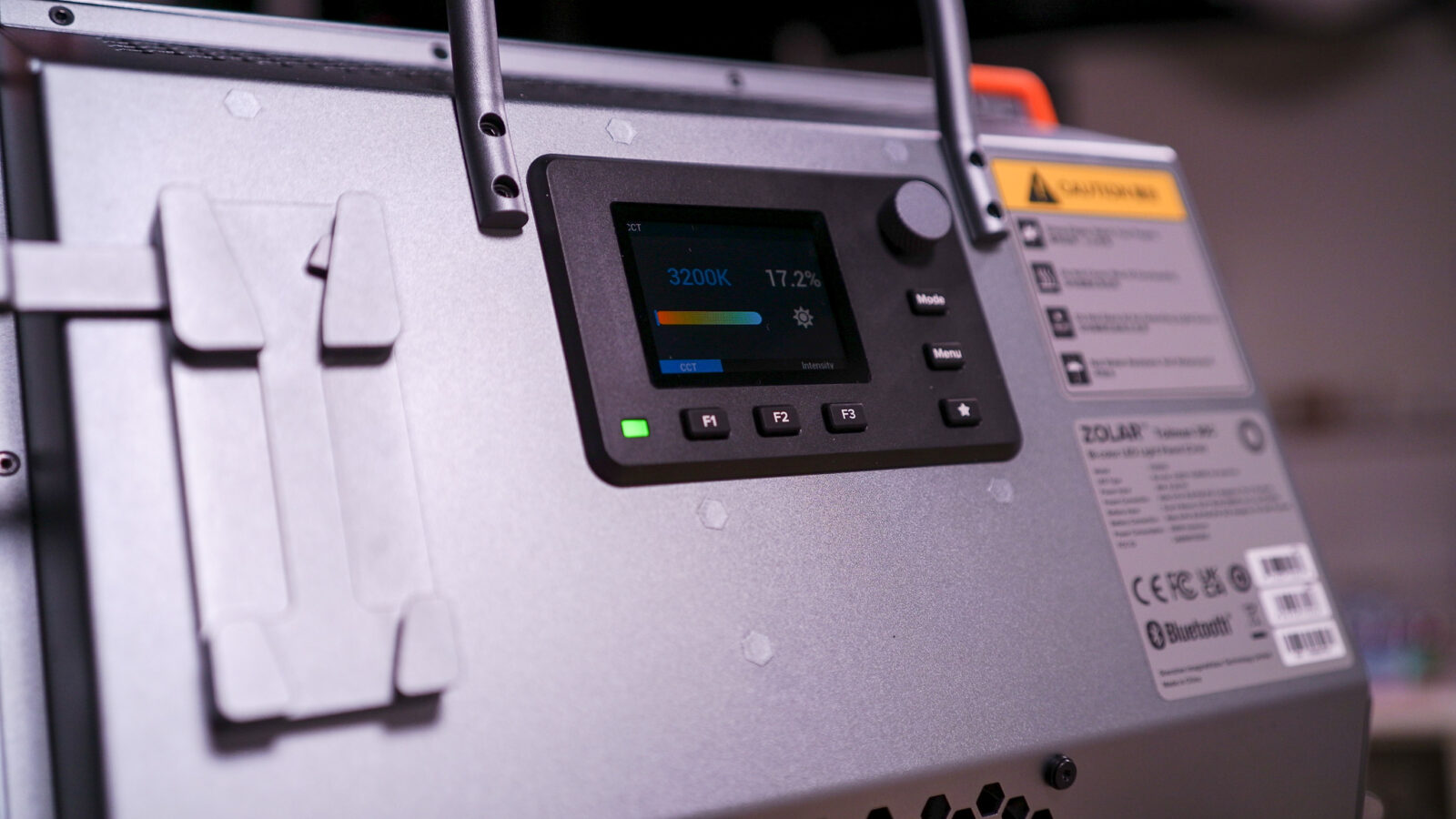
One thing to consider is there is currently a relative lack of accessories for the ZOLAR line. The manufacturer does make an affordable $49.00, 32×32 compatible soft-box, but as of publishing time, I didn’t have access to it for this review. A promised upcoming grid would also be a 100% needed accessory for me and I’d like to see 3rd parties like DoPChoice adopt solutions for the ZOLAR line. So far, though, your accessory options are limited — although this limitation is partially offset by the easily changeable beam angles.
The build quality of both the power supply and lamp heads are heavily reliant on aluminum with plastic protectors. I did find the yoke design (moves a full 360-degrees) to be excellent and not prone at all to slipping.
Each light includes the following:
- 1x ZOLAR Fixture
- 1x Yoke Mount
- 1x Remote Controller
- 1x AC DC Power Adapter
- 1x ZOLAR Stylist W 32×32
- 1x AC Power Cable
- 1x Remote Connector Cable
- 1x Quick User Guide
Differences Between ZOLAR Toliman 30S and ZOLAR Toliman 30C
When considering the $200 price difference between the Bi-Color ZOLAR Toliman 30S ($499) and Bi-Color ZOLAR Toliman 30C ($699) we should break down the key differences between these two models in particular:
- DMX Support – Available in the ZOLAR Toliman 30C, but not the 30S
- powerCON Support/Cables – Included with the Toliman 30C, but not the 30S
- The 200W Toliman 30C has a higher powered PSU, compared with the 120W Toliman 30S
- Improved power supply and heat dispatching system in the ZOLAR Toliman 30C, compared with the 30S
The Z Cam ZOLAR team also tested the ZOLAR Toliman 30C for 4000 hours straight at full brightness running non-stop and “there’s no brightness drop and color degrading on all ZOLAR lights in our labs.” This is an impressive claim and not one that I’ll be able to test for quite that duration, but it is clear that the manufacturer has placed a premium on quality of light.
The perfect ZOLAR user?
I always wrestle with the question of the perfect user for individual lighting products because I’ve been surprised before by filmmakers thinking outside the box, but the ZOLAR line seems aimed at owner/operators or small studio owners. I’m basing that primarily on the relatively affordable cost and simple usability. This is also the perfect series for those looking to dip their toes into DMX control, either through 5-pin wired, sACN or Art-Net 4 (DMX not available in the ZOLAR Toliman 30S).
The RGBAW chips in the Vega 30C also do a great job creating those “middle” colors between Red, Green and Blue and I was especially impressed by the quality of the rich “amber” color.
I found ZOLARLink to also be especially easy to use. Essentially you designate a lead lighting fixture and you can control up to 50 fixtures in a group for a maximum of 16 groups — all within the lights themselves without using another device. Of course, I didn’t have 50 fixtures to test, but this feature worked great with three.
Final thoughts on this ZOLAR Light Review
There’s much to like here. Robust exterior build mixed with excellent color, solid price point, and accurate kelvin handling overcome a relative lack of currently available accessories and packaging that splits the power supply from the lamp head.
I also don’t want to discount the fact that the ZOLAR line of lights is coming from the well-established Z-Cam manufacturer. That should give us some piece of mind that these fixtures are here to stay and that servicing options will be available well into the future.
Please note that we are working on a video review of the ZOLAR lights, but it will only be published in the new year. The video review will also include measurements for the lights.
What do you think of our ZOLAR Light review? Will you be adding the Z-CAM ZOLAR line of lights to your kit? Let us know in the comments below!




